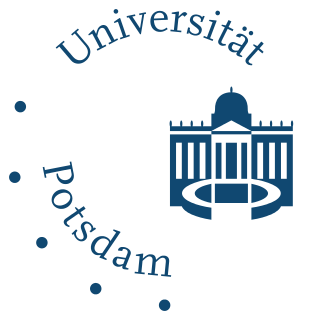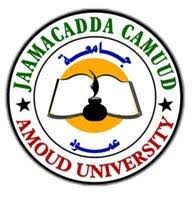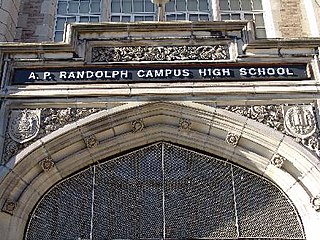
The Texas Academy of Mathematics and Science (TAMS) is a two-year residential early entrance college program serving approximately 375 high school juniors and seniors at the University of North Texas. Students are admitted from every region of the state through a selective admissions process. TAMS is a member of the National Consortium for Specialized Secondary Schools of Mathematics, Science and Technology.

The Oklahoma School of Science and Mathematics (OSSM) is a two-year, public residential high school located in Oklahoma City, Oklahoma. Established by the Oklahoma state legislature in 1983, the school was designed to educate academically gifted high school juniors and seniors in advanced mathematics and science. OSSM opened doors to its inaugural class in 1990. It is a member of the National Consortium of Secondary STEM Schools (NCSSS).
A course credit is a measure of the size of an educational course, often used to determine whether the requirements for an award have been met, to facilitate transfer between institutions, or to enhance intercomparability of qualifications. Credit may be input-based – defined by the quantity of instruction given – or outcome-based – defined by the learning outcomes and a notional time to achieve those outcomes.

Miami Dade College is a public college in Miami, Florida. Founded in 1959, it has a total of eight campuses and twenty-one outreach centers throughout Miami-Dade County. It is the largest college in the Florida College System with more than 100,000 students. The college enrolls a significantly larger number of Hispanic students compared to other colleges and universities in the state of Florida. The college serves a higher number of minority students than any other college in the nation.
A dean's list is an academic award, or distinction, used to recognize the highest level scholarship demonstrated by students in a college or university. This system is most often used in North America, though institutions in Europe, Asia, and Australia may also employ similar measures. It is often synonymous with honor roll and honor list, but should not be confused with honours degrees.

Kuwait University is a public university located in Kuwait City, Kuwait.

The University of Potsdam is a public university in Potsdam, capital of the state of Brandenburg, northeastern Germany.
Advanced Placement (AP) Calculus is a set of two distinct Advanced Placement calculus courses and exams offered by the American nonprofit organization College Board. AP Calculus AB covers basic introductions to limits, derivatives, and integrals. AP Calculus BC covers all AP Calculus AB topics plus additional topics.

Amoud University is a comprehensive public university, located in the city of Borama in Somaliland.
The University of Minnesota Talented Youth Mathematics Program (UMTYMP) is an alternative secondary mathematics education program operated by the University of Minnesota's School of Mathematics Center for Educational Programs (MathCEP). Classes are offered in St. Cloud, Rochester, Duluth, and Minneapolis, Minnesota. The Program is supported by the Minnesota state legislature. The course structure, intensity, and workload are comparable to college-level classes in rigor.
A super senior is a student in a four-year educational institution who has more than four years in attendance or a surplus of credits required for a diploma and has not yet graduated. In certain cases these students are also known as postgraduates.
Bangladesh University of Business and Technology or BUBT is a private university in Bangladesh, located in Mirpur, Dhaka, Bangladesh.

Higher education in Norway is offered by a range of ten universities, nine specialised universities, 24 university colleges as well as a range of private university colleges. The national higher education system is in accordance with the Bologna process, with bachelor's degrees, master's degrees and doctoral degrees. Acceptance is offered after finishing upper secondary school and meeting general university admissions certification.

The A. Philip Randolph Campus High School is a four-year public high school in New York City. It is located in Harlem, adjacent to the City College of New York. It occupies a landmark building formerly occupied by The High School of Music & Art. The school was established in 1979 as an educational collaboration between the Board of Education and The City College of New York. The high school is open to all New York City residents, and more than 90% of its graduates attend college. Its daily attendance rate is 90 percent or better throughout the year. The students may take eleven advanced placement (AP) courses in five subject areas as well as college courses at Randolph, The City College, and Borough of Manhattan Community College. In doing so, many students earn college credits while attending high school.
Student athlete is a term used principally in universities in the United States and Canada to describe students enrolled at postsecondary educational institutions, principally colleges and universities, but also at secondary schools, who participate in an organized competitive sport sponsored by that educational institution or school. The term student-athlete was coined in 1964 by Walter Byers, the first executive director of the National Collegiate Athletic Association (NCAA). The term is also interchangeable with the synonymous term “varsity athlete”.

Mathematics education in the United States varies considerably from one state to the next, and even within a single state. However, with the adoption of the Common Core Standards in most states and the District of Columbia beginning in 2010, mathematics content across the country has moved into closer agreement for each grade level. The SAT, a standardized university entrance exam, has been reformed to better reflect the contents of the Common Core. However, many students take alternatives to the traditional pathways, including accelerated tracks. As of 2023, twenty-seven states require students to pass three math courses before graduation from high school, while seventeen states and the District of Columbia require four. A typical sequence of secondary-school courses in mathematics reads: Pre-Algebra, Algebra I, Geometry, Algebra II, Pre-calculus, and Calculus or Statistics. However, some students enroll in integrated programs while many complete high school without passing Calculus or Statistics. At the other end, counselors at competitive public or private high schools usually encourage talented and ambitious students to take Calculus regardless of future plans in order to increase their chances of getting admitted to a prestigious university and their parents enroll them in enrichment programs in mathematics.
Waxahachie Global High School is a high school in Waxahachie, Texas, founded in 2007 on the historic T.C. Wilemon campus. It is one of only 91 STEM academies in the state of Texas. It was additionally granted Early College High School status in 2009 through a partnership with Navarro College, allowing students to earn an associate degree along with their high school diploma. Recently, as of the start of the 2013-2014 school year, Global High made a partnership with UT Tyler for all the STEM-based college courses offered at Global. As a public charter school, students from Ellis County and surrounding areas can attend regardless of zoning. Many students commute from surrounding cities such as Waxahachie, Red Oak, Ennis, Maypearl, Midlothian, Palmer, Italy, Cedar Hill, and Desoto. In 2014, Waxahachie Global was named the "Best High School" by the U.S. News & World Report. Starting in the 2018-19 school year, the Global campus is located in the Billy R. Hancock Building.
MyMathLab is an online interactive and educational system designed by Pearson Education to accompany its published math textbooks. It covers courses from basic math through calculus and statistics, as well as math for business, engineering and future educators. Pearson designed MyMathLab to respond to the needs of instructors and students who wanted more opportunity for practice, immediate feedback, and automated grading.

Kilis 7 Aralık University is located in the city of Kilis, in southeastern Turkey. The name of the university comes from the date when the city of Kilis was liberated from occupation during the Turkish War of Independence – December 7, 1921.
3-2 engineering programs, also called combined plans or dual degree programs, provide a unique opportunity for a liberal arts and engineering education. 3-2 students get a BA from their home institution, often a liberal arts college or university, and BS in engineering from a partner school. These programs are not to be confused with similar master's degree programs. At the end of five years, the student will have two bachelor's degrees, one from each school.









